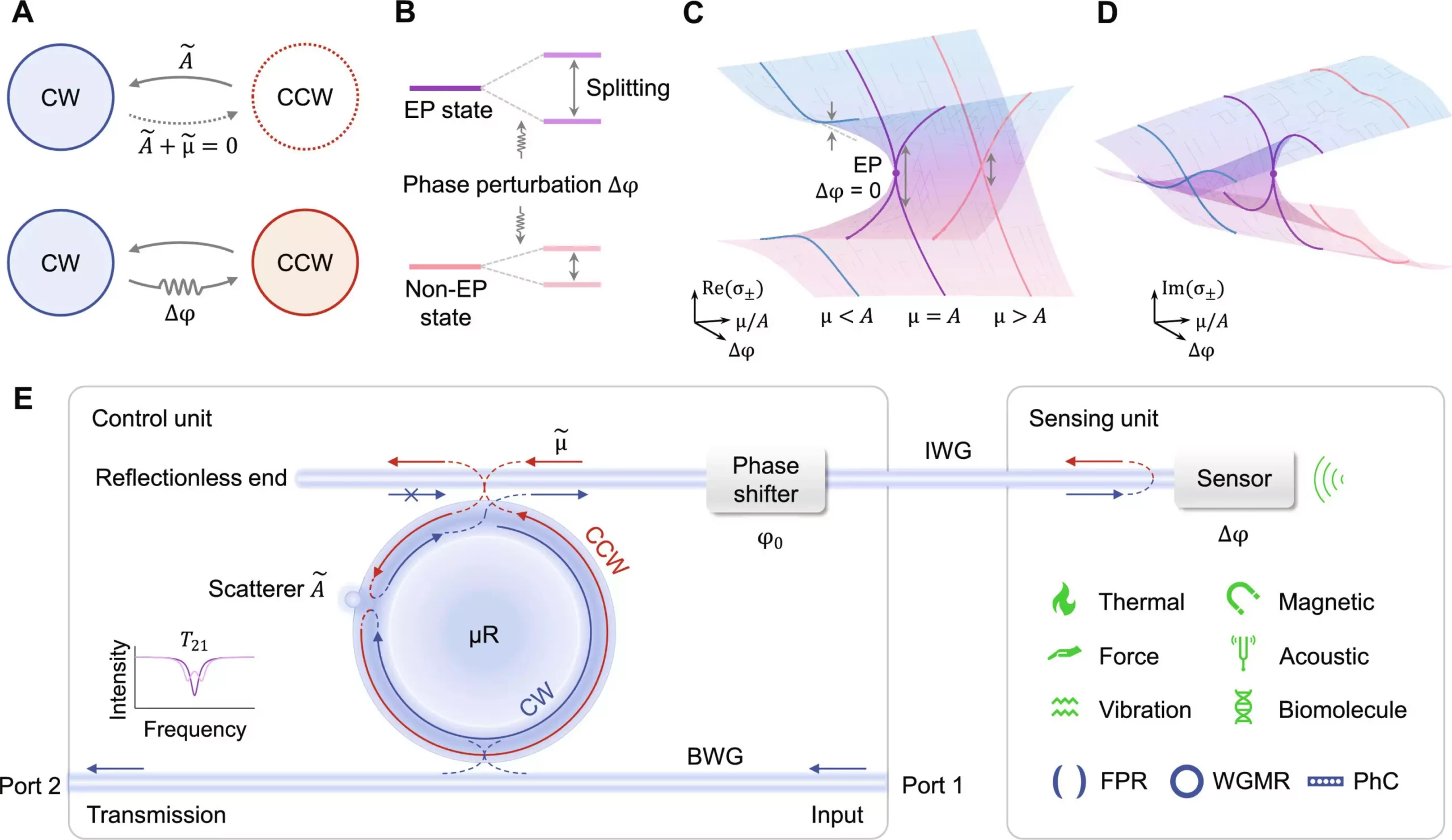Optical sensors play a crucial role in various scientific and technological fields, enabling the detection of gravitational waves and aiding in medical diagnostics by imaging biological tissues. These sensors rely on light to detect changes in the properties of the environment they monitor, such as chemical biomarkers and temperature variations. Despite their significance, a major challenge in optical sensing has been increasing sensitivity to detect faint signals amidst noise.
Recent research conducted by Lan Yang and Wenbo Mao at Washington University in St. Louis has uncovered a groundbreaking approach to enhance optical sensing using exceptional points (EPs). These EPs represent unique conditions within systems where extraordinary optical phenomena can occur, allowing for the deployment of unparalleled sensitivity to environmental perturbations. Unlike conventional methods that necessitate sensor modifications, Yang and Mao have developed an EP-enhanced sensing platform that integrates an EP control unit with external sensors without the need for complex alterations.
By decoupling sensing and control functions, Yang and Mao have circumvented the stringent physical requisites for operating sensors at EPs, thereby broadening the application of EP enhancement to a wide array of conventional sensors. This includes ring resonators, thermal and magnetic sensors, as well as sensors designed to detect vibrations or biomarker perturbations. The EP configuration developed by Yang’s team has demonstrated a six-fold reduction in detection limit compared to conventional sensors, proving its efficacy in detecting weak signals amidst noise.
The novel EP-enhanced sensing platform opens up new possibilities for optical sensors in various fields, including environmental monitoring, health diagnostics, and biomedical imaging. The ability to tune the EP configuration through adjustments to the control unit enables adaptability to diverse sensing scenarios, enhancing the universality and applicability of EP-enhanced sensing. This advancement could revolutionize medical applications, particularly in enhancing magnetic sensing for MRI technology, potentially streamlining current MRI setups that require extensive infrastructure and temperature control.
The utilization of exceptional points for advanced optical sensing represents a significant leap forward in sensor technology, offering unprecedented sensitivity and versatility in detecting environmental perturbations. Yang and Mao’s innovative approach not only enhances existing sensors but also paves the way for future advancements in optical sensing across various disciplines. With continued research and development in this field, the possibilities for EP-enhanced optical sensors are truly limitless.


Leave a Reply